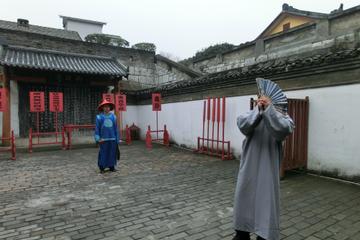Jingjiang Mansion
TIME : 2016/2/22 10:14:07

Jingjiang Mansion
Guilin is mainly known for the magical karst landscape surrounding it, but next to the nature there is also plenty of culture. In fact, the town has been an imperial city since the Qin Dynasty and its main estate bears witness to this glorious past and the city’s long history. The Jingjiang Mansion, also called the Jingjiang Princes’ City, was the seat of the Jingjiang Family, who reigned in this part of China between 1368 and 1644. The mansion was built after the first Ming Emperor, Zhu Yuanzhan, made his nephew, today known as King or Prince Jingjiang, ruler of the Guilin region.
Designed to function as the inner city of Guilin, the mansion and grounds are very extensive and include four halls, several pavilions and over 40 secondary buildings surrounding the main mansion. The property was built in the typical imperial style and according to the strict rules of the Ming Dynasty, which can be seen in the yellow walls that are topped by tiered roofs and encircled by tall, red pillars. The property is also enclosed by a 1.5-kilometer-long wall with the buildings, gates, the palace, the gardens and the quarters being arranged on a symmetrical axis.
The center of this axis is a karst hill called the Solitary Beauty Peak, a towering 216 meter high mass of sharp limestone cliffs interspersed by green vegetation. Exactly 306 steps lead to the top of the peak, where visitors can find the Solitary Beauty Pavilion with its red pillars, as well as panoramic views over the now modern city. It took over 20 years to build the imperial city and 630 years of history took place within those walls, but today, Jingjiang Mansion is the site of the Guangxi Normal University.
Practical Info
Jingjiang Mansion can be found in the center of Guilin and opens daily from 8:30am to 5:30pm. The closest bus station is Lequn Road, which is serviced by bus numbers 1, 22, 30, 99 and 100.
